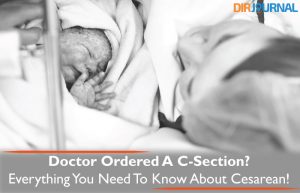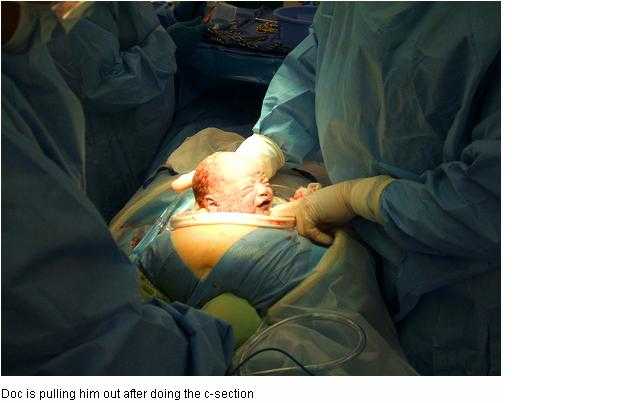





The number of C-Sections in the United States have been on the rise since the 1990s. While the main reason could be health-related, such as older women having babies, obesity etc.; there are many who opt for a C-section just to avoid the discomfort associated with a normal delivery.
For many of us, the thought of pushing a baby through a small opening can appear daunting, if not terrifying. The fact that C-section is also considered as a routine these days and not a major abdominal surgery also pushes women towards getting one.
According to recent data; today, one out of three babies is born via C-section and this rate is expected to go up even more.
This procedure can be a lifesaver in many cases when the mother or baby is in distress or because of other factors that can make a vaginal delivery hazardous. They could also be performed because the baby looks big, the mother is past her due date or because the labor is not progressing well. But experts say that only about 5 percent of C-sections are emergencies. Around 3 percent of them are completely a matter of choice for which there is no medical reason.
Critics are of the opinion that there is no reason for so many healthy pregnancies ending up in surgery. They say that there are a certain number of C-sections that are inevitable for the sake of the mother or baby’s health, but there are too many unnecessary C-sections being performed in the United States.
Risks of C-Section
A C-section involves cutting through the skin, tissue and the uterine wall to extract the baby and placenta, and then sewing up the incision. The recovery period can be a minimum of four weeks when compared to just a few days for vaginal deliveries.
Apart from the long recovery period, there is also the risk of infection, blood clots, blood loss and some fatal complications too.
Here are a few things every pregnant woman needs to know:
What Makes C-Sections So Hot?
Technology Picks Up Potential Health Risks – C-sections are hot because the advancement of technology is picking up potential health risks and problems easily. Ultrasounds in the third-trimester can now predict the size of the baby and monitors can check the baby’s heart rate during labor and delivery. They help obstetricians rely heavily on technology to see potential problems during pregnancy, labor and delivery. If they see a problem, then they consider it safer to do a Cesarean.
According to a leading obstetrician, “Continuous recording of the fetal heart rate came into being in the 1970s and is likely a big contributor to the increase in C-sections. Doctors today are more inclined to do a C-section if there is anything of concern.”
Older Mothers – Women having children late in life are more at risk for labor and delivery related problems. They also have a difficult time pushing the baby out. Apart from this, many older women undergo fertility treatments to get pregnant and this usually leads to twins, triplets etc., which calls for a surgical delivery.
Assistant professor of Obstetrics and gynecology at the Drexel University College of Medicine says, “It’s very hard to predict how the second baby will come out.” He said that complicated positions are very common with multiple babies. In such a scenario, a C-section is looked at as a safer alternative for the health of the fetus and has become the default method of delivering such babies, irrespective of their position.
With more and more women opting to have children late in life, the number of C-sections is on the rise.
Overweight Mothers – Pregnant women with a body mass index of 30 or more are more likely to need a C-section. Unfortunately, almost 35 percent of the women above the age of 20 today fit into this category, according to the American Heart Association.
Doctors say that heavier women tend to have bigger babies, making it difficult to push them out normally. The excessive fatty tissue can also prevent the baby from moving smoothly through the birth canal. Another factor to consider is the fact that overweight women usually have other associated problems like high blood pressure, which might lead to induction of labor and C-section.
Induction Of Labor Leads To C-Sections – Many women are of the opinion that induction of labor is almost the same as natural labor. But that is not true. Induction of labor with drugs, manual stripping of the membranes connecting the amniotic sac to the uterine walls or even rupturing the amniotic sac to cause contractions does not always help with labor. Most of these women end up having a C-section.
The First C-Section Leads To A Second – The general belief is that once you have a C-section, all subsequent deliveries have to be through C-sections too. Previously, there used to be VBAC (vaginal birth after a Cesarean) but now it is rarely performed, after a study in 1999 indicated that there is a small chance that the scar could give way, which poses a fatal risk to both the mother and baby. After that study, it was recommended that doctors can only perform VBACs in hospitals where emergency C-sections are performed. But because of the liability concerns and the fear that something could go wrong, they are hardly performed anymore.
However, it is important to realize that multiple C-sections are not completely safe either. There is the risk of hardening of the scar tissue and the risk of the placenta implanting abnormally.
Conclusion
As we all know, a normal vaginal delivery is the best option and mothers who have no health problems are advised by doctors to tolerate the discomfort associated with a normal delivery, keeping in mind the future health problems that a C-section can lead to.
If a pregnant woman is unfortunate enough to have complications or when a normal delivery turns bad, doctors say that a C-section is the safest option.
It is not easy to compare a C-section to a normal delivery, because there are numerous factors that are taken into consideration. Every pregnant woman wants a health baby, and towards this end, it is important to talk to your obstetrician at all times to understand the options. The better informed you are, the safer the delivery will be, irrespective of whether it is a normal vaginal delivery or a C-section.
View Comments
Usha needs to do a LOT more research re c section safety. Check out the Cochrane database, for starters.
How many children can you have with a c-section?
Unfotunatly most OB's would rather perfom a c section for their own convienance without a thought for the delivering mother or baby. And of coarse the get paid more for c sect vs natural delivary. Even sadder is they do not inform patients. They make you feel like you dont have a choice. At a staggering 1 in three babies being born via c section ( some OBs stats are higher like 41% or more) the ACOG (American Congress of Obstetricians and Gynecologists) could learn a little something from the midwives and consider midwifery as a standard! What ever happened to the Dr's who actually see their patients as patients and not just another file? or as $$ ?